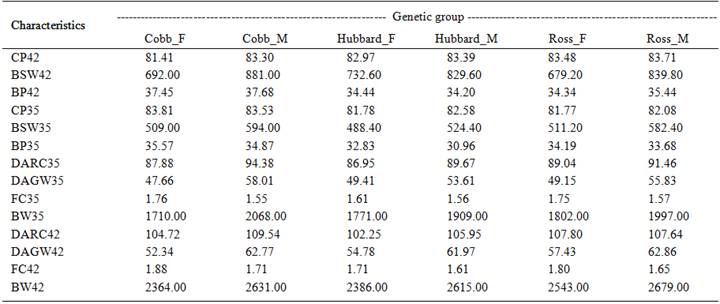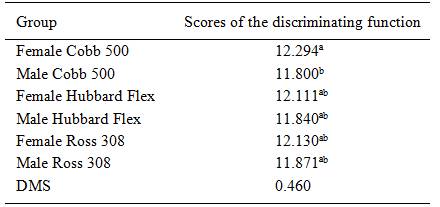ABSTRACT:
The aim of this study was to verify the genetic divergence amongst three broiler genotype, from both sexes, by means of a multivariate performance analysis and carcass traits. Nine hundred and ninety sexed, one-day chicks were utilized; belonged to the following genetic groups: Cobb 500, Hubbard Flex, and Ross 308. The study evaluated the daily average weight gain, the daily average ration consumption, feed conversion, body weight, weight and performance for breast, and carcass over the period from 1 to 35, and from 1 to 42 days of age. Performance of the genetic groups was evaluated by means of multivariate analysis of variance and by Fisher's linear discriminant function, using Roy's largest eigenvalue and Roy's union-intersection test for multiple comparisons. The genetic divergence study was carried out through the analysis of canonical variables and through Tocher method. Female animals from Cobb 500, Hubbard Flex, and Ross 308 genetic groups presented different canonical averages from males of the same groups. First two canonical variables explained 88.10% of variation between genetic groups. Genetic divergence between the evaluated groups allowed formation of two clusters with the following genotypes: Cluster 1 - Cobb 500, Hubbard Flex and Ross 308 females; Cluster 2 - Cobb 500, Hubbard Flex and Ross 308 males.
Key words:
grouping; discriminating analysis; genetic group

 Thumbnail
Thumbnail




